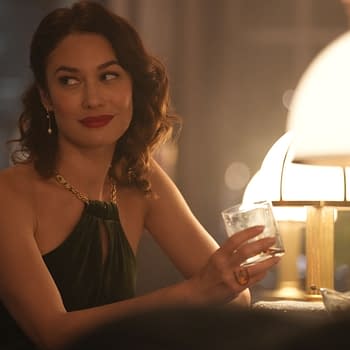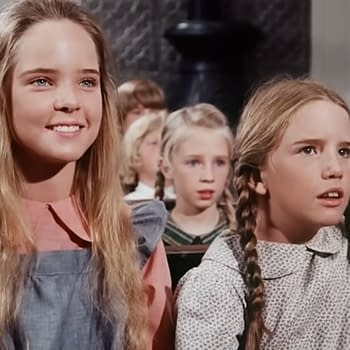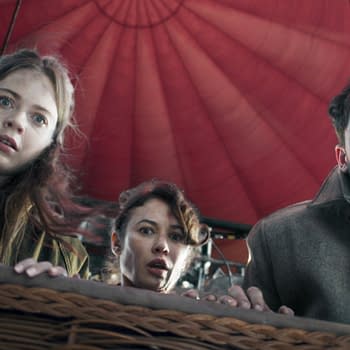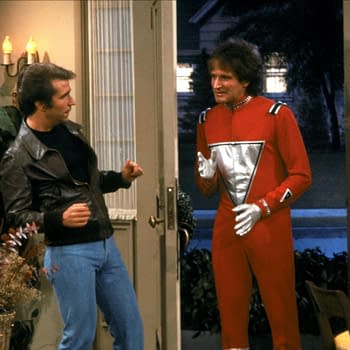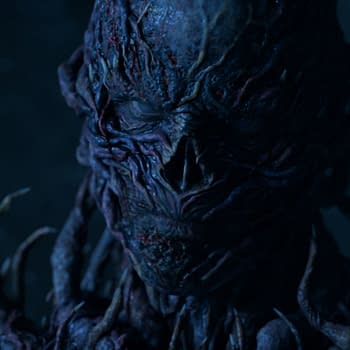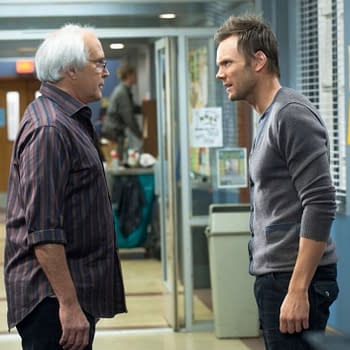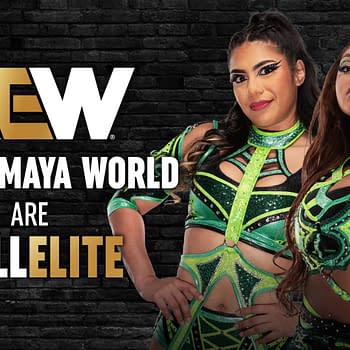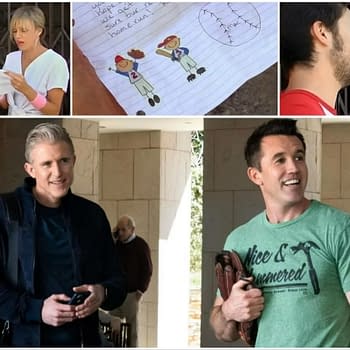Posted in: Disney+, Marvel, TV | Tagged: bleeding cool, cable, elizabeth olsen, Jac Schaeffer, matt shakman, paul bettany, rolling stone, streaming, television, tv, WandaVision
Director Matt Shakman Says WandaVision "Love Letter to Television"
There's no secret WandaVision owes a lot of its success to Matt Shakman along with showrunner Jac Schaeffer creating the sitcom worlds within the town of Westview, New Jersey. Obviously, the homages took quite a bit of extensive research to recreate and execute. Working on It's Always Sunny in Philadelphia certainly didn't hurt either as the director's time on the FXX series help mold what would be the MCU sensation on Disney+ as he spoke to Rolling Stone about making the series come to life.
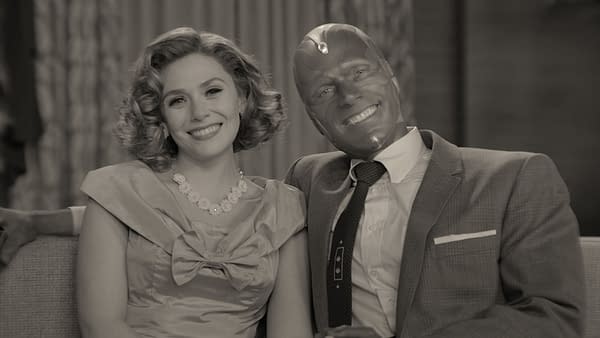
"This one was all about doing a deep dive into sitcoms of the past, this love letter to television," Shakman said. "Because it's ultimately revealed that Wanda is creating this reality from her own history of watching past sitcoms, and her own power is creating this reality, I knew these had to be perfectly done. We approached them with authenticity and not parody the whole time, trying to create a show that would stand up as WandaVision on its own. So we watched old prints, we interviewed people who worked on the shows, we read making-of books, and when possible, we talked to the people who had made them, like Dick Van Dyke."
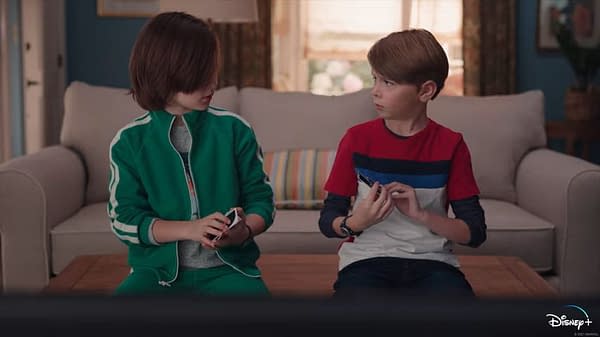
How "Always Sunny" Shaped "WandaVision" Premiere Episode
When it came to the premiere episode of the Disney+ series with "Filmed Before a Studio Audience", Shakman already had another classic Sunny episode in mind that helped served as the model. "The first one was not that hard, because I direct a lot of theater, and it essentially is theater to do a sitcom in front of a live audience," he said. "We had done [the musical episode] 'The Nightman Cometh' on Always Sunny the same way. I made the guys do it all the way through in front of an audience so that we could have the incredible reaction of people seeing it the first time. When we were getting into WandaVision Episode Three, with The Brady Bunch, that's tricky, because we were trying to create something that had integrity on its own and wasn't just copying The Brady Bunch of that era, but had its own language, too. The Seventies are really easy to self-parody, and it was like trying to figure out how do we not go too far with bell bottoms and sideburns. I'm a child of the Eighties, was a sitcom actor in the Eighties, so I know that era really well. I didn't work on Malcolm, but I almost got hired on Malcolm, and I worked on a lot of Malcolm knock-offs like Oliver Beene. I understood exactly what the zany subjective camera was. And then Modern Family, I've done a little of the interview docu-stuff as well."
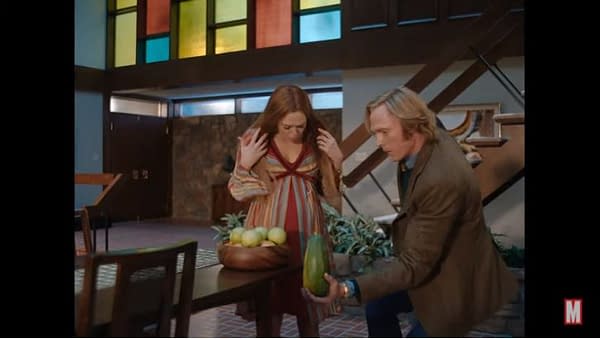
One obstacle Shakman discovered was making sure the series captured all the aspects of the era comedies to fit the tone and inflection while retaining the MCU series' existing theme. "Certainly, the practical special effects are wickedly hard to do," he said. "I thought it would be easy and charming to recreate the Bewitched-style stuff, and no, it took more prep time than some of our big Marvel things — like, all of these technicians hanging out in the rafters with monofilament, getting frustrated because they couldn't make a plate fly the right way. That stuff is hard, and we had increased respect for the people who made Bewitched and I Dream of Jeannie. But the biggest thing was tone with actors, because comedy changes over time, acting styles change over time, and for us, it was understanding how comedy worked, but also how they made things feel grounded. It was important to us for this to feel grounded. You look back over those early episodes and hopefully realize it's telling the same story of a woman dealing with grief and accepting loss."

Shakman broke down the process of how the actors absorbed the material. "We started with sitcom boot camp, which was basically rehearsal," he explained. "We spent several weeks watching television episodes and discussing them, looking at books about how they made the show and then reading our own scripts in the style of that. We also worked with a wonderful dialect coach who worked on how people sounded in different eras. Clothing matters a great deal, how people sat, and how they moved — we looked at all of that. The actors are wonderful, and they're all such hard workers, and they all prepared so well that they would do work on their own watching episodes. They would come in the next day and Paul [Bettany] was like, 'I was up all night watching Family Ties! Let's talk about Tom Hanks!' But they're fearless, and we mostly just wanted to give ourselves options. So we pushed the comedy and the broadness, and then would always remember the grounded version and pull back, just to make sure that we were believing always in this love story at the heart of the whole show, and that the stakes were real, to some degree."
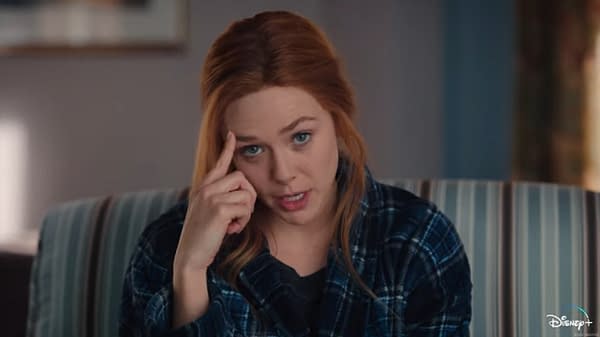
To read more on how Shakman used his own personal experience as a child actor on Just the Ten of Us, other TV shows styles that were explored, the psychology of WandaVision, The Scarlet Witch in Doctor Strange and the Multiverse of Madness, and why Malcolm in the Middle stands out for him, you can check it out on Rolling Stone. All of WandaVision is available to stream on Disney+.






